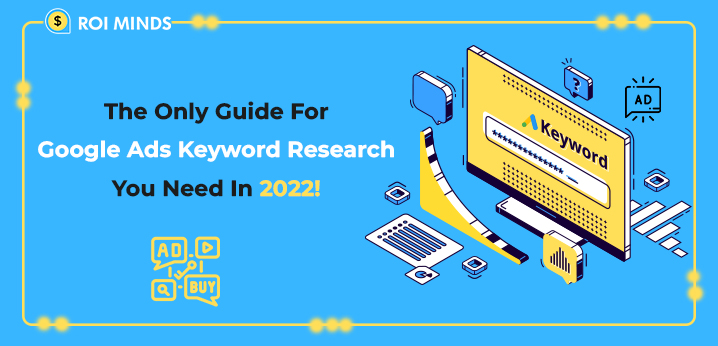Google Shopping Ads or product listings Ads are one of the most valuable ways to generate sales for any eCommerce store.
We have witnessed that it can produce up to 25% higher conversion rates and have a very low CPC.
When you are not listing your product catalogs through Google shopping ads, you miss around 40% of your total revenue.
Implementing the shopping ads with the right strategies can lead to good results, but you need to work on advanced strategies to scale up your conversions.
Let’s first understand Google Shopping A/B Testing and shopping campaigns Setup Strategies.
Google Shopping Ads Funnels:

A/B testing is a really important aspect while scaling your Google shopping campaigns. Testing different audiences with different funnels is unlimited based on one’s advertising goals and objectives And if you are down to it, then the Google Shopping ads campaigns ads funnel testing could be described in this categories:
- Buying Intent
- Consideration Intent
- Awareness Intent
These are three phases in which you can test your products/categories & find out what works best for you. Accordingly, you can structure your shopping campaigns to drive the traffic based on the queries you want to target from your shopping campaigns.
Pro-Tip:
- When testing different phases of traffic for your products, they should never contradict each other. Properly segregate & plan out a structure for your shopping campaigns.
- Use cross-negative keywords, adjust bids & priority campaigns as per the testing phases, try out different variants with duplicate product ids.
- Keep your campaigns’ “priority” at priority while testing different traffic phases. This is very important when advertising the same product for the same country in multiple shopping campaigns.
- Adjust the bids based on the traffic you are targeting, plan out for which shopping campaign phase you want to bid aggressively or not.
Buying Intent Funnel:
Action: Your target audience knows what they are looking for. Let’s take an example where you think your ideal targeted customer is aware of your brand & looking for the product you are selling.
Ex: Product: Laptop
Brand: Apple
A/B Testing:
id: XYZ
Title 1: Apple MacBook Pro Laptop – 16″ – 256 GB
Title 2: Apple MacBook Pro Laptop – 14″ – 500 GB
Description: Latest Apple MacBook Pro Laptop 16″ inch variant with 256 GB memory.
Structuring: Based on the above points and to target “Buying” traffic, you can structure your shopping campaigns.
Traffic Type -> Campaign -> Priority -> Bids -> Block Bad terms
“High Buying Intnet Traffic” -> “Campaign #1” -> “Low Priority” -> “Aggressive Bids” -> “Expensive”
Consideration Intent Traffic:
Your target audience might want to explore more options. Let’s take an example where you think your ideal targeted customer is aware of your brand & but looking for more choices in line with product categories.
Ex: Product: Laptop
Brand: Apple
A/B Testing:
id: XYZ
Title 1: Apple Macbook Laptops
Title 2: Apple Macbook Laptops
Description: Latest Apple Macbook Laptops. Get the one you are looking for.
Structuring: Based on the above points and to target “Consideration” traffic, you can structure your shopping campaigns.
Traffic Type -> Campaign -> Priority -> Bids -> Block Bad terms
“Consideration” -> “Campaign #2” -> “Medium Priority” -> “Moderate Bids” -> “Color – black”
Awareness Intent Traffic:
Your target audience is unsure about a specific product or brand. Let’s take an example where you think your ideal targeted customer has a particular product in their minds but is unaware of which brand or product type they should go for.
Ex: Product: Laptop
Brand: Any

A/B Testing:
id: XYZ
Title 1: Laptops
Title 2: Gaming Laptops
Title 3: Work Laptops
Description: Latest Apple laptops. The best-in-class features.
Traffic Type -> Campaign -> Priority -> Bids -> Block Bad terms
“Awareness” -> “Campaign #3” -> “High Priority” -> “Low Bids” -> “Apple”
The initial phase of planning & execution is the most important step. If this is done right, you just have to focus on allocating budget & bids to your campaigns to drive targeted traffic & eventually turn into profitable revenue.
The idea here is to show your ad to the right customer & “what they are looking for.” Structuring your shopping campaigns and making a flow so that we are sending the right traffic to the right place is the purpose of our whole strategy.
The flow of traffic & use of priority determines bids for campaigns:
The highest priority campaign will bid. If one campaign has a higher priority than the others, the campaign with the higher priority will bid. For example, imagine two campaigns sharing a product, and one campaign has a High priority, and the other has a Medium priority. The bid from the High priority campaign will be used, even if the bid in the Medium priority campaign is set to a larger amount.
Suppose the highest priority campaign runs out of budget, the lower priority campaign bids. If the campaign with the highest priority runs out of budget, the next lower priority campaign will place the bid. Continuing with the previous example, when the budget for the High priority campaign is used up, the bid from the Medium priority campaign will be used.
Note about ad delivery: Your budget will be spread throughout the day. So to reserve funds for later in the day, a High priority campaign might not participate in an auction even if the budget is not yet exhausted. Instead, a lower priority campaign that is not reserving funds might participate in the auction. Learn more about ad delivery.
When multiple campaigns have the same priority, the highest bid is used. If multiple campaigns all have the same priority, the campaign with the highest bid for that product will participate in the auction. For example, if three campaigns share the same product and have a low priority, the highest bid from any three campaigns will be used.
Visualize a flow where you can structure your shopping campaigns & get the most out of your targeted traffic phases:

Applying this strategy based on your ideal traffic and strategies that go right with it will help you scale your shopping campaigns & by that, you will have full control over the things that are working. And accordingly, you can make the right decisions based on the results you are getting. And the rest is up to you on how you want to spend your money.
Make sure to try implementing different scaling strategies to boost sales.





